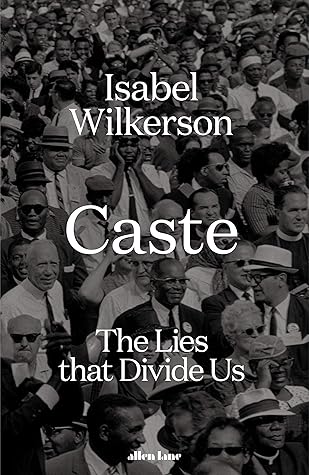More on this book
Community
Kindle Notes & Highlights
The man chairing the meeting, Franz Gürtner, the Reich minister of justice, introduced a memorandum in the opening minutes, detailing the ministry’s investigation into how the United States managed its marginalized groups and guarded its ruling white citizenry. The seventeen legal scholars and functionaries went back and forth over American purity laws governing intermarriage and immigration. In debating “how to institutionalize racism in the Third Reich,”1 wrote the Yale legal historian James Q. Whitman, “they began by asking how the Americans did it.”
Hitler especially marveled at the American “knack for maintaining an air of robust innocence in the wake of mass death.”10
Lynching postcards were so common a form of communication in turn-of-the-twentieth-century America that lynching scenes “became a burgeoning subdepartment of the postcard industry.
After the lynching, hundreds more were rounded up and arrested. One of the organizers of the lynch mob, John M. Parker, later described Italians as “just a little worse than the Negro, being if anything filthier in [their] habits, lawless, and treacherous.”23 He went on to be elected governor of Louisiana.
Later, in 1922, a black man in Alabama named Jim Rollins was convicted of miscegenation for living as the husband of a white woman named Edith Labue. But when the court learned that the woman was Sicilian and saw “no competent evidence”24 that she was white, the judge reversed the conviction. The uncertainty surrounding whether she was “conclusively” white led the court to take the extraordinary step of freeing a black man who in other circumstances might have faced a lynching had she been seen as a white woman.
An African-American man who managed to become an architect during the nineteenth century had to train himself “to read architectural blueprints upside down,”37 wrote the scholar Charles W. Mills, “because he knew white clients would be made uncomfortable by having him on the same side of the desk as themselves.”
A century after the slaveholder spoke those words, the caste system had survived and mutated, its pillars intact. America was fighting in World War II, and the public school district in Columbus, Ohio, decided to hold an essay contest, challenging students to consider the question “What to do with Hitler after the War?”16 It was the spring of 1944, the same year that a black boy was forced to jump to his death, in front of his stricken father, over the Christmas card the boy had sent to a white girl at work. In that atmosphere, a sixteen-year-old African-American girl thought about what should
...more
He asked them how much they would have to be paid to live the next fifty years as a black person. The students thought it over and came back with a figure. Most said they would need $50 million—$1 million for every year that they would have to be black. They felt they would need it, he said, to “buy protection from the discriminations and dangers white people know they would face once they were perceived to be black.”8


